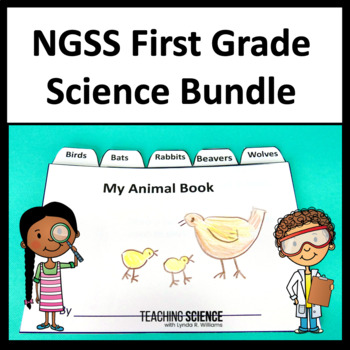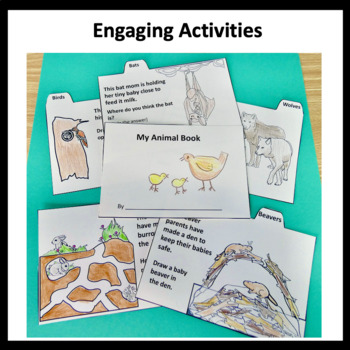First Grade Science NGSS Full Year Science Lessons and Units and Activities
- Zip
What educators are saying
Products in this Bundle (11)
showing 1-5 of 11 products
Bonus
Description
First Grade Science Bundle for NGSS. This NGSS first grade science bundle is a year’s worth of science for first grade. It covers all the NGSS standards for first grade. Hands-on science, great labs, and interesting activities for first-grade science, discounted in the first-grade science bundle. Save 20% by purchasing this first grade science bundle.
This Bundle Includes:
All About Chickens First Grade
NGSS Engineering activities for First Grade
Teachers Love This Bundle!❤️❤️❤️❤️
Elladia ⭐️ ⭐️ ⭐️ ⭐️ ⭐️ Extremely Satisfied
Just what I needed. Worked really well for the grade level and aligns perfectly with the standards.
Chad ⭐️ ⭐️ ⭐️ ⭐️ ⭐️ Extremely Satisfied
Covers my whole year and all the standards for first grade NGSS. Each resource is clear and easy to use. I am really pleased with this bundle.
The resource includes labs, science centers, sorting cards, lesson plans, worksheets, puzzles, and more. Students will love these age-appropriate science materials designed to meet the first-grade NGSS standards.
Standards are addressed as follows:
Waves Light and Sound
1-PS4-1. Plan and conduct investigations to provide evidence that vibrating materials can make sound and that sound can make materials vibrate. Sound Vibration Unit
1-PS4-2. Make observations to construct an evidence-based account that objects can be seen only when illuminated Light Unit
1-PS4-3. Plan and conduct an investigation to determine the effect of placing objects made with different materials in the path of a beam of light. Light Unit
1-PS4-4. Use tools and materials to design and build a device that uses light or sound to solve the problem of communicating over a distance.*Sound Vibration Unit
Structure and Function, Information Processing
1-LS1-1. Use materials to design a solution to a human problem by mimicking how plants and/or animals use their external parts to help them survive, grow, and meet their needs. External Features for Living Things, Designing a Solution to a Human Problem
1-LS1-2. Read texts and use media to determine patterns in behavior of parents and offspring that help offspring survive Animals and Their Babies and All about Chickens
1-LS3-1. Make observations to construct an evidence-based account that young plants and animals are like, but not exactly like, their parents. Animals and Their Babies
Space Systems, Patterns and Cycles
1-ESS1-1. Use observations of the sun, moon, and stars to describe patterns that can be predicted.
Sun and Moon Patterns
1-ESS1-2. Make observations at different times of year to relate the amount of daylight to the time of year.
Seasons First Grade
K-2.Engineering Design
K-2-ETS1-1. Ask questions, make observations, and gather information about a situation people want to change to define a simple problem that can be solved through the development of a new or improved object or tool.
K-2-ETS1-2. Develop a simple sketch, drawing, or physical model to illustrate how the shape of an object helps it function as needed to solve a given problem.
K-2-ETS1-3. Analyze data from tests of two objects designed to solve the same problem to compare the strengths and weaknesses of how each performs.
These resources are created by Lynda R. Williams at Teaching Science
Follow me and get news of my new resources. Each new resource is discounted by 50% for the first 24 hours!
If you have questions about my resources please contact me at lywilliams1@gmail.com
* My resources are secure and not editable for copyright reasons.





